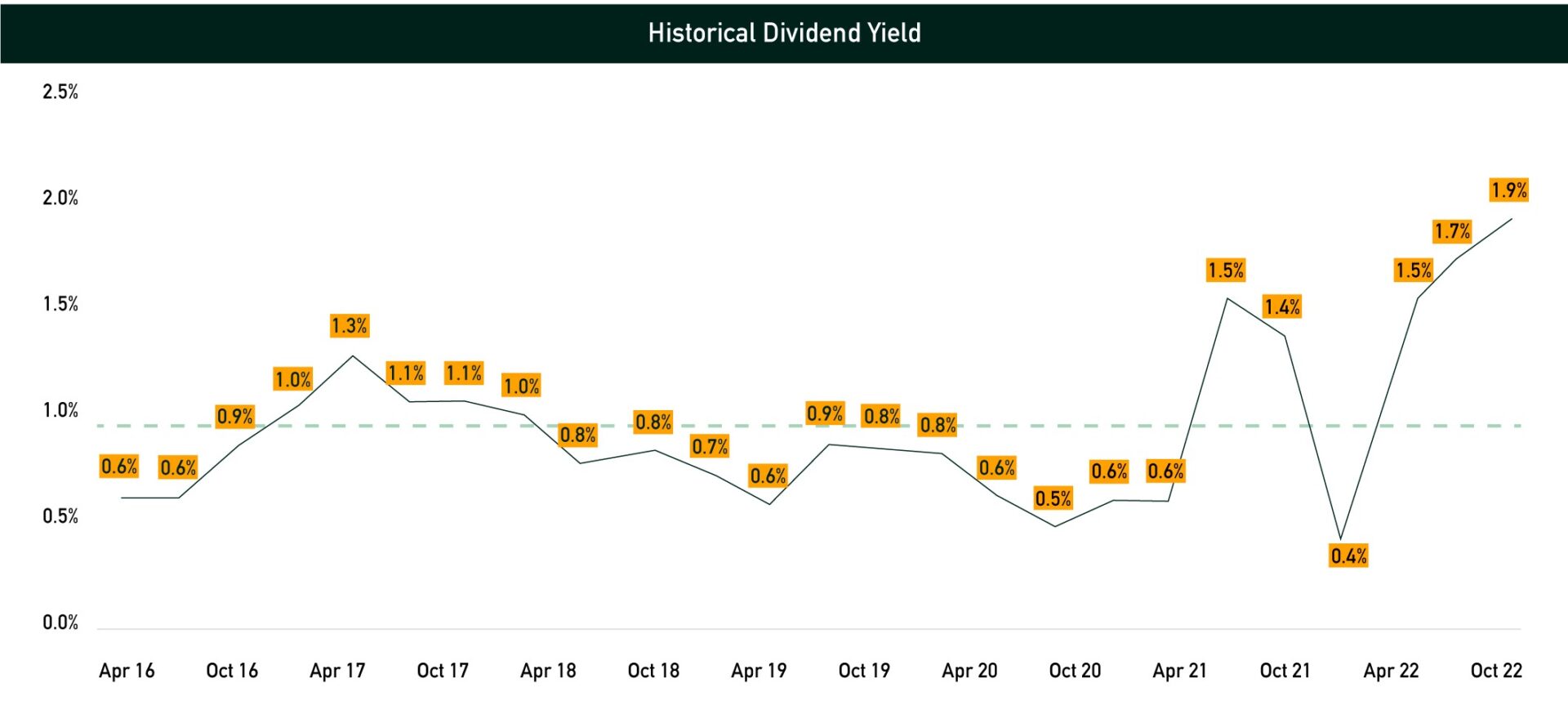How To Maximize Returns Based On Your Diversification Ratio?
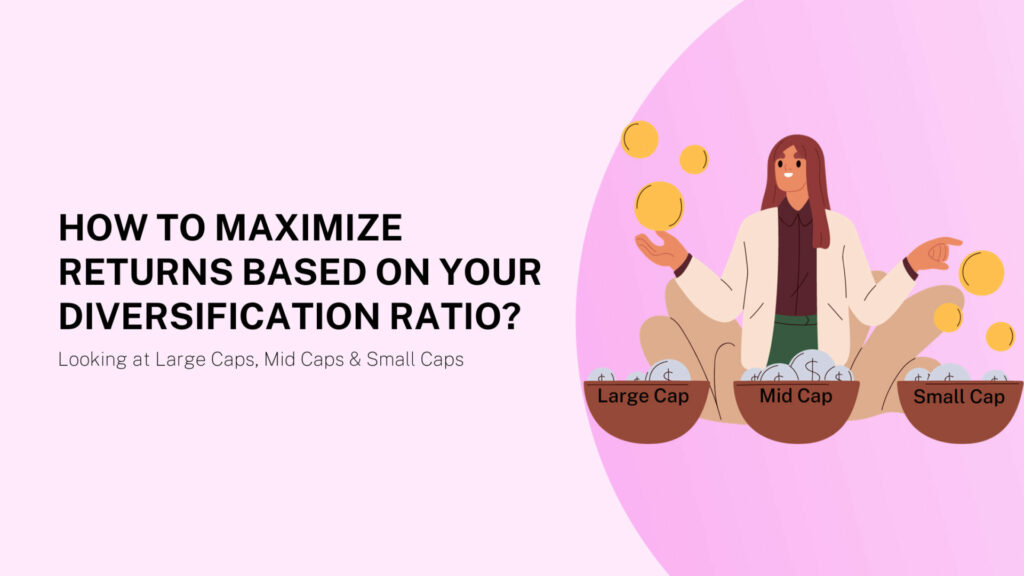
In the Indian equity market, investors face a choice between small-cap and large-cap stocks, each with unique return potentials. Small-cap stocks, representing companies with smaller market capitalizations and in growth stages, offer high returns but are riskier. They surged by about 40% last year, outperforming larger stocks. However, this growth has increased their valuation, potentially limiting future gains. Large-cap stocks, from well-established companies, are traditionally seen as safer, providing stability and steady returns. Despite this, their growth has been more modest recently, around 10 to 12% in the last year, impacted by competitive and innovative market forces.
Investors should consider market conditions, economic indicators, and sectoral potential when deciding between small-cap and large-cap stocks. Diversification and understanding company fundamentals are key in managing risks associated with both. While small-caps have shown high returns recently, their inherent risks compared to the stability of large-caps should be a crucial consideration for investors. In today’s article we will compare large cap stocks against mid cap stocks and small cap stocks performance and explore diversification benefits in different market regimes.
We will also look at the concept of diversification ratio within a portfolio which is key to managing risk while aiming for maximum return potential. It is a critical tool for investors to balance their exposure across different market caps.
Returns in Years with Positive Nifty Returns vs Negative
Let’s do a comparative analysis of returns for large, mid, and small-cap stocks during years with positive and negative Nifty returns. In years when the Nifty returns were positive, small-cap stocks showed the highest returns at approximately 33.98%, followed by mid-caps at around 30.98%, with large-caps trailing at about 24.20%. This trend suggests that smaller companies tend to benefit more in bullish market conditions, potentially due to their capacity for rapid growth and scaling, which can result in outsized returns.
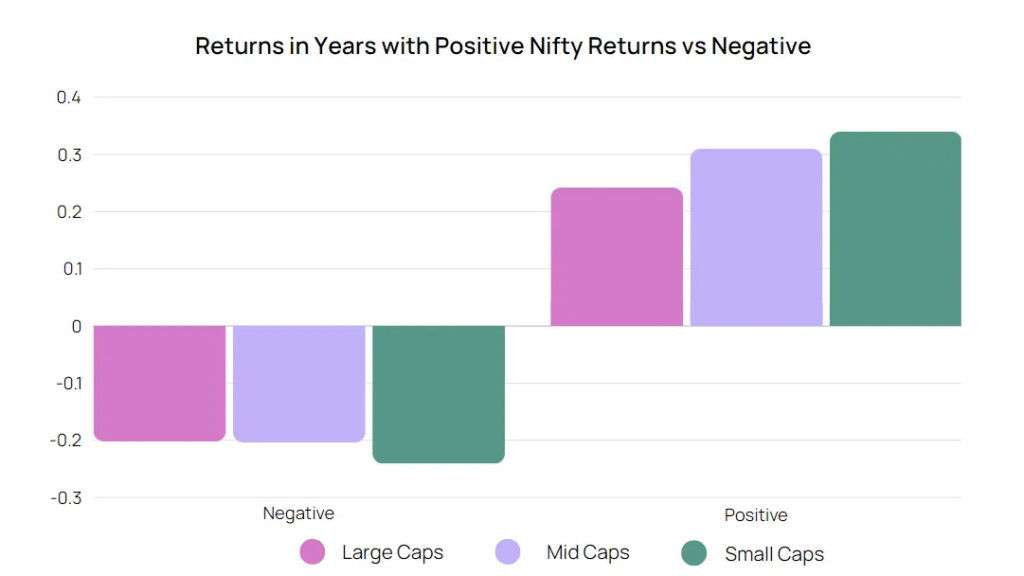
Conversely, during years with negative Nifty returns, all categories suffered losses, with small-caps incurring the highest at roughly -24.08%, mid-caps at -20.37%, and large-caps showing the least negative impact at -20.20%. This indicates that in bearish markets, large-cap stocks are somewhat more resilient, likely due to their established market presence and financial stability, which can help cushion against downturns.
There is an inherent risk-reward trade-off between large caps, mid caps and small caps. While small-caps can provide substantial growth in favorable conditions, they also carry greater risk during market downturns. Investors looking for growth and able to tolerate volatility might favor small-caps in positive markets, whereas those seeking preservation of capital in uncertain times might lean towards large-caps.
Diversification Ratio for Years with Positive Nifty Returns vs Negative
When examining returns in varying Nifty conditions, the diversification ratio in a portfolio should account for the different risk profiles and performance of market cap segments. In positive years, small-caps have soared, indicating the utility of a higher small-cap ratio in bullish conditions. However, the significant losses in negative years point to the need for a stabilizing large-cap presence. The optimal diversification ratio should thus be flexible, increasing exposure to small-caps in anticipation of market upswings, while anchoring the portfolio with large-caps to weather downturns.
How does Volatility Impact return performance across different market caps – Large, Mid & Small Caps?
We can compare the returns of large, mid, and small-cap stocks during years with high volatility versus low volatility. Small-cap stocks outperform in both scenarios, delivering 26.77% returns in high volatility years and 20.99% in low volatility ones. This demonstrates the high-risk, high-reward nature of small-cap investments, where volatility can amplify returns due to rapid price movements influenced by market sentiment and speculative trading.
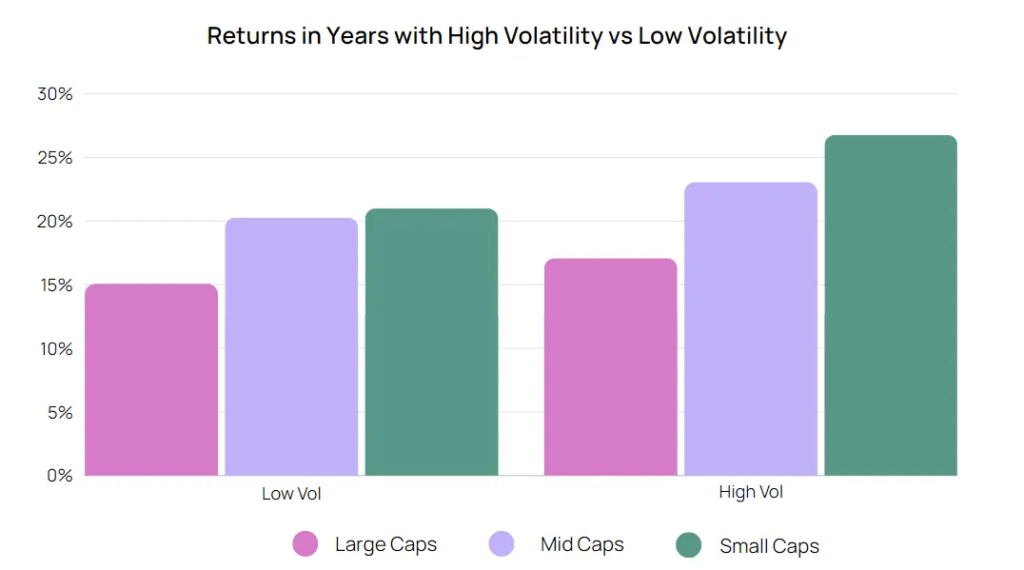
Mid-cap stocks also show a significant increase from 20.27% in low volatility years to 23.05% in high volatility years. This suggests that mid-caps, while less volatile than small-caps, still benefit from market fluctuations to a considerable degree, possibly due to a blend of growth potential and established market presence. Large-cap stocks, perceived as the most stable, show the smallest increase in returns from low to high volatility, from 15.07% to 17.08%. This smaller differential indicates their robustness in the face of market fluctuations, due to their size, established operations, and often more diversified revenue streams.
It’s evident that the performance gap between large, mid, and small-cap stocks widens in positive market conditions. Yet, during downturns or high volatility, this gap seems to narrow, especially between large and mid-cap stocks. This could imply that while small-caps have higher growth potential during market upswings, large and mid-cap stocks offer more protection in uncertain times, balancing out their performance across different market conditions.
How FII & DII flow impacts returns across different market caps?
Let’s look at Foreign Institutional Investors (FII) and Domestic Institutional Investors (DII) flows with market returns across large, mid, and small-cap stocks. Notably, there are periods where DII investments seem to counterbalance FII outflows, which could indicate a stabilizing effect DIIs have on the market, possibly cushioning against foreign capital flight.
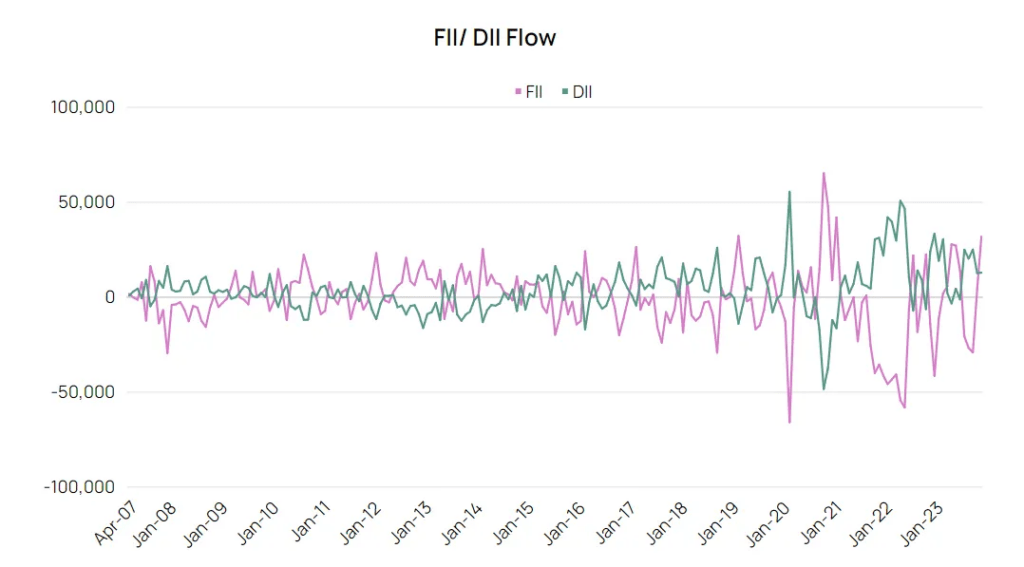
Here we can see that in years with positive FII flow, small-cap stocks lead with returns of 4.43%, followed by mid-caps at 4.28% and large-caps at 3.54%. Negative FII flows see all categories in decline, with small-caps again most affected at -2.52%. This suggests that FIIs have a significant impact on market performance, especially on the more volatile small-cap segment.
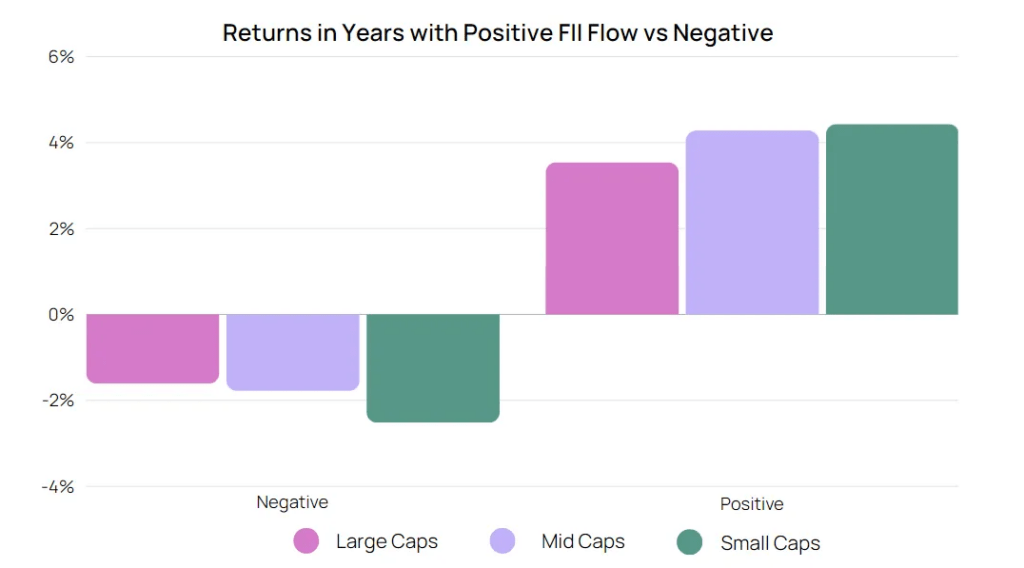
During years with positive DII flow, the returns across all market caps are less differentiated than with FII flows, with small-caps at 4.88%, mid-caps at 4.56%, and large-caps at 3.98%. Negative DII flows inversely affect the segments less drastically, with small-caps at -1.21%, indicating a possible lower reliance on domestic institutional investment for market buoyancy.
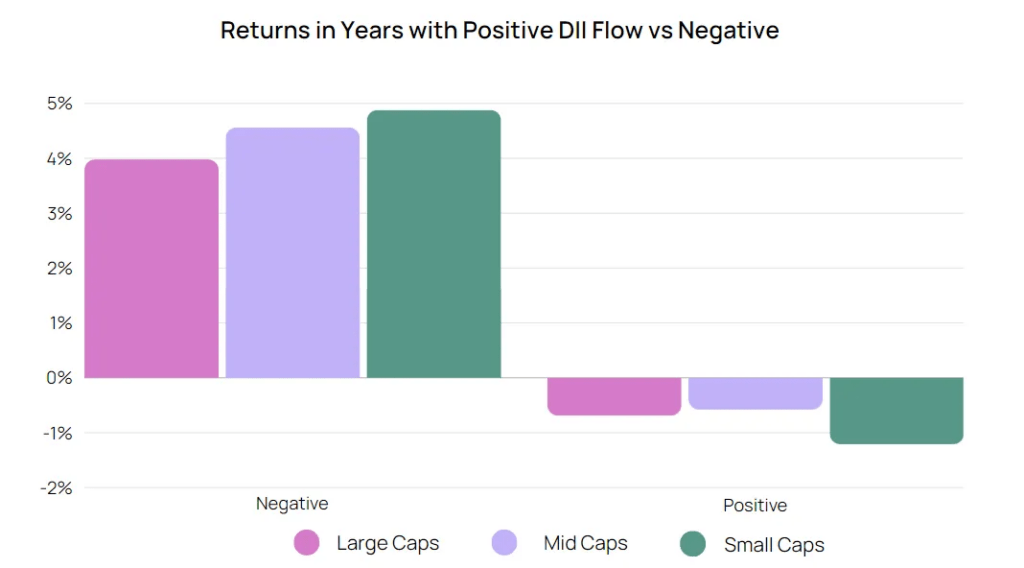
It is apparent that FIIs might have a pronounced influence on market sentiments, amplifying returns, especially in small-cap stocks during bullish and high-volatility environments. Meanwhile, DIIs appear to provide a steadier investment stream, offering support across all market caps, but with a lesser impact on returns than FIIs. FIIs may drive higher highs and lower lows, particularly in more speculative small-cap stocks, while DIIs seem to contribute to a more balanced market, with their impact more evenly spread across large, mid, and small-cap stocks.
Conclusion:
An effective portfolio management strategy in the Indian equity market requires an agile diversification strategy, one that is responsive to both market cap performance and the broader financial ecosystem’s influence. It’s not just about balancing different types of stocks but also about fine-tuning the portfolio to the market’s pulse — capturing the growth of small and mid-caps when the market is ripe for returns, and shifting towards the defensive nature of large-caps when preservation of capital becomes paramount.
Explore Wright Momentum smallcase here, use code NYE2024 for FLAT 20% Off
Wryght Research & Capital Pvt Ltd•SEBI Registration No: INA100015717
103, Shagun Vatika Prag Narayan Road, Lucknow, UP 226001 IN
CIN: U67100UP2019PTC123244
Disclaimer: Investment in securities market are subject to market risks. Read all the related documents carefully before investing. Registration granted by SEBI, membership of BASL and certification from NISM in no way guarantee performance of the intermediary or provide any assurance of returns to investors. The content in these posts/articles is for informational and educational purposes only and should not be construed as professional financial advice and nor to be construed as an offer to buy/sell or the solicitation of an offer to buy/sell any security or financial products. Users must make their own investment decisions based on their specific investment objective and financial position and use such independent advisors as they believe necessary.

